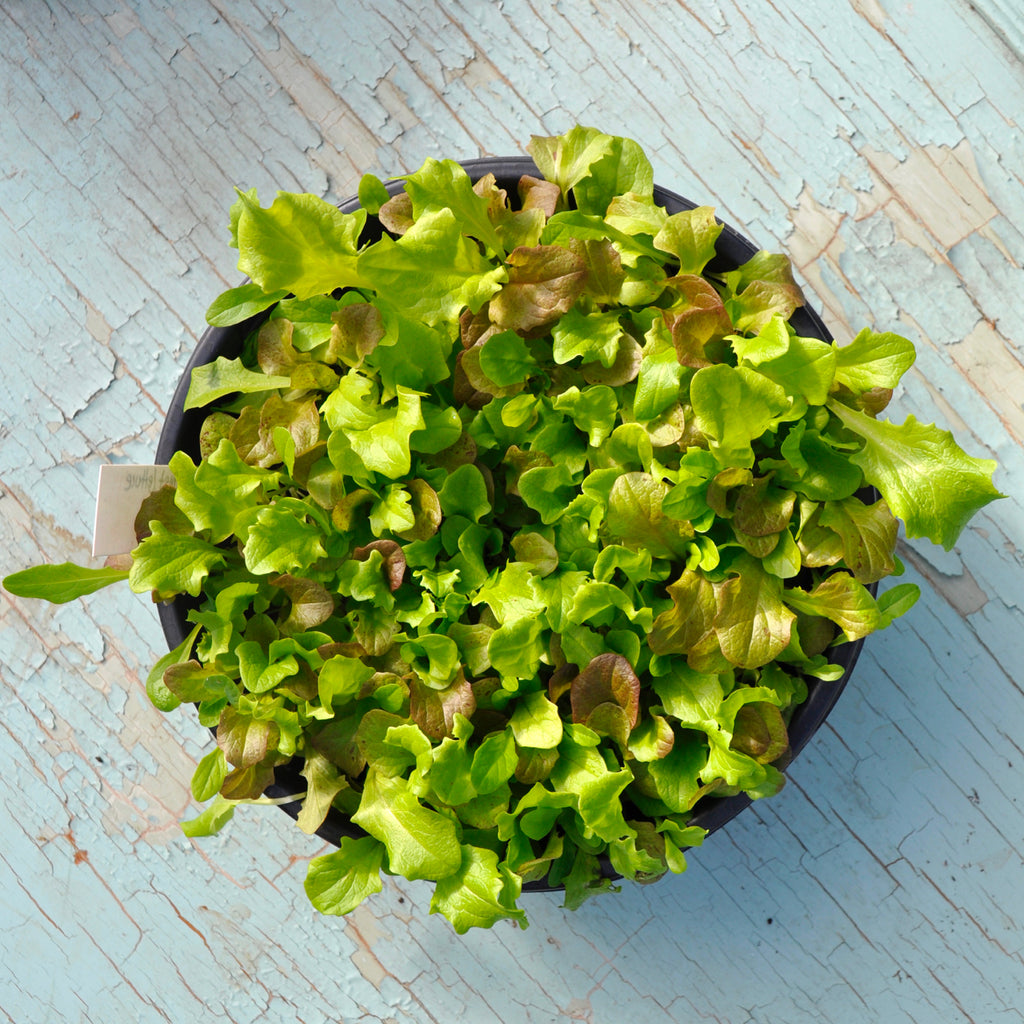Whether it be the simple, energizing benefits of watching things grow or the full-on satisfaction of growing your own organic food during winter, baby greens are one of the most reliable choices for an indoor winter project.... with one caveat: they need a fair amount of light.
Back in February 2016, we launched our first 28 Day Indoor Garden Challenge, which was meant to highlight that wonderful point in winter where it becomes possible to grow baby greens in a bright windowsill, without necessarily requiring supplemental lights. Of course, baby greens grow faster and fuller with simple grow lights but wow, it sure is neat that we can simply sprinkle seeds for leafy greens onto composty soil and enjoy harvestable salad just one month later!

In the spirit of the original 28 Day Garden Challenge, we are including FREE organic Gourmet Lettuce Blend seeds with our 4th January Pick-Me-Up kit 🙂
Before we get into planting instructions, there are a few interesting things to know about baby greens. First, many leafy greens and herbs can be grown as baby greens - which simply refers to harvesting the plants at a stage that is somewhere between seedling and fully grown. Most baby greens are harvested between 21 days and 35 days from sowing. If you compare that to the maturity dates you will see on seed packets, typically baby greens are about halfway to full maturity. Baby greens are in contrast to sprouts, which are harvested at 3-5 days and microgreens, which are harvested at 15 - 18 days. All of the above have been found to have greater nutritional value when compared to the same crop, full-sized!
The second important detail about growing baby greens is that they are sown very thick - completely different from the approach you take when sowing lettuce, kale or basil for the garden. By sowing thick, you get a dense, indoor harvest quickly and with much less fuss compared to trying to grow a full basil plant or head of lettuce.
Lastly, baby greens are usually treated as cut and come again, meaning you can get several harvests from each crop. Shear back the plants by half (use sharp scissors) and enjoy a re-grow within a week or two.
 Although not required once daylight levels have reached February levels, simple full spectrum lights will make the home harvest of baby greens faster and more realistic as an actual supplement to store-bought produce.
Although not required once daylight levels have reached February levels, simple full spectrum lights will make the home harvest of baby greens faster and more realistic as an actual supplement to store-bought produce.
If you have grow lights on hand, they will definitely facilitate a faster, more abundant crop of baby greens. We use T5 or LED lights tuned to 6400K, which is equivalent to the light spectrum found in mid-afternoon in June (i.e. peak growing conditions for leafy greens). There are tons of ways to set lights up, but essentially think about what is easy and realistic for your space and plan to have the lights about 15 cm (6") above your plants. Grow lights should be on approximately 16 hours and off for 8 hours each day.
The project we have created for this week includes:
-
A "loaf pan" container with drainage
-
Organic Winter Greens soil
-
FREE organic Gourmet Lettuce Blend seeds
Now for the easy part, sowing! Lettuce seeds and most leafy greens prefer to be towards the surface of the soil, where they will get some light. To germinate, seeds for leafy greens require seed-to-soil contact; we recommend starting with lightly pre-moistened soil which will encourage the seeds to stick. Fill the loaf pan with the supplied soil (pre-moistened), tap the container down to even out the soil... then simply sprinkle about half the pack of seeds evenly over the soil.
You can set your loaf pan anywhere at comfortable room temperature to germinate, then once seedlings have emerged move to the brightest location available. Germination typically starts in 3 - 5 days. Keep the soil lightly moistened during germination, perhaps using a spritzer to apply water without disturbing the soil. Your little plants will turn into recognizable leafy lettuce over the course of a few weeks.
As the plants develop, you may need to water more frequently given that the roots are larger and the leaves transpire more as they grow bigger. Check the soil daily with your finger (should be slightly damp) and watch out for wilting - a sure sign you need to water. No thinning is required, and all of the nutrients are built into the organic soil, so no need to fertilize.
We often get the question, "can I reuse the soil?" and the answer is, "sort of". Each crop of baby greens will use up nutrients and also create a large number of roots in the soil mass, therefore it may be hard to reuse the soil more than once. But of course, you can compost it and turn it into gold for your outdoor garden!
We have tons of information resources on our website relating to growing February baby greens:
Also, check out this episode of the Grow Guide podcast
Happy planting!







